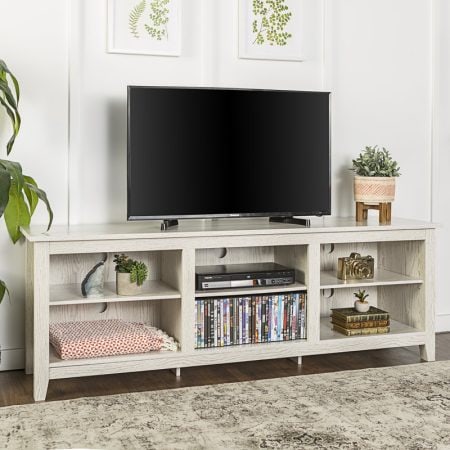Should TV Stand Be Wider Or Longer Than TV?
TV stands can be a great asset to your living room (or even your bedroom). There are tons of different options, ranging from rustic to modern, so they can easily fit into any room style-wise.
But what are the ideal dimensions of a TV stand? Should it be wider or longer than the TV? Or the same size? We’re here to help you find your perfect TV stand.
Measure your TV Stand
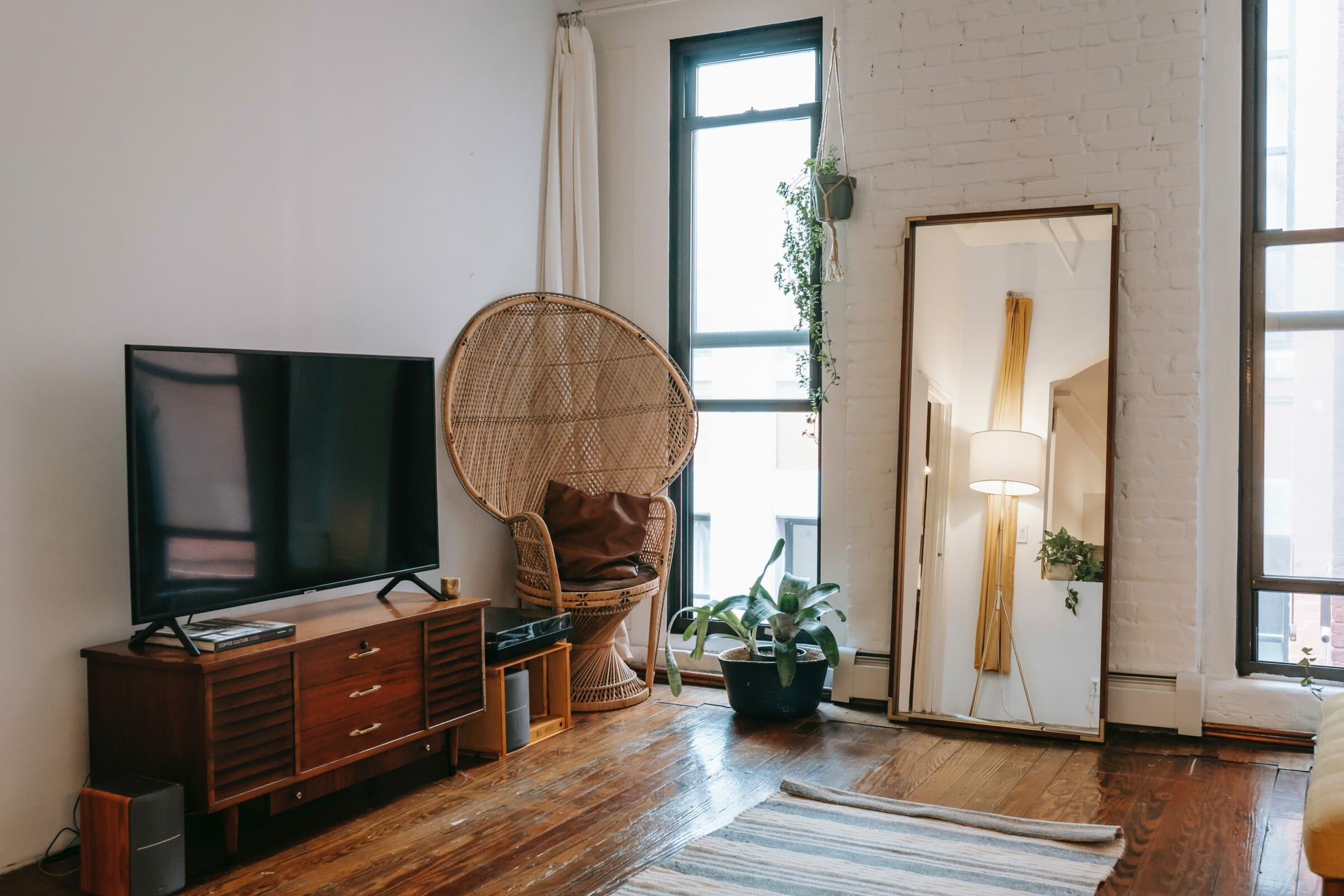
If you’ve already found the TV of your dreams in that perfect size, it’s time to shop for a TV stand. The first step here is to measure everything! That way, you’ll find the right stand without any room for error.
The most important thing to note here is that a TV is measured diagonally, so the sizing on your box is just the size of the screen and not the borders. So the best thing to do is to whip out your measuring tape and measure for the full frame from the left border to the right border of your TV.
Now it’s time to measure the TV stand. The general rule of thumb is to have your TV at least 3 to 6 inches wider than your TV, no matter if it’s on the entertainment station or mounted above.
Can the TV Be Longer Than the TV Stand?
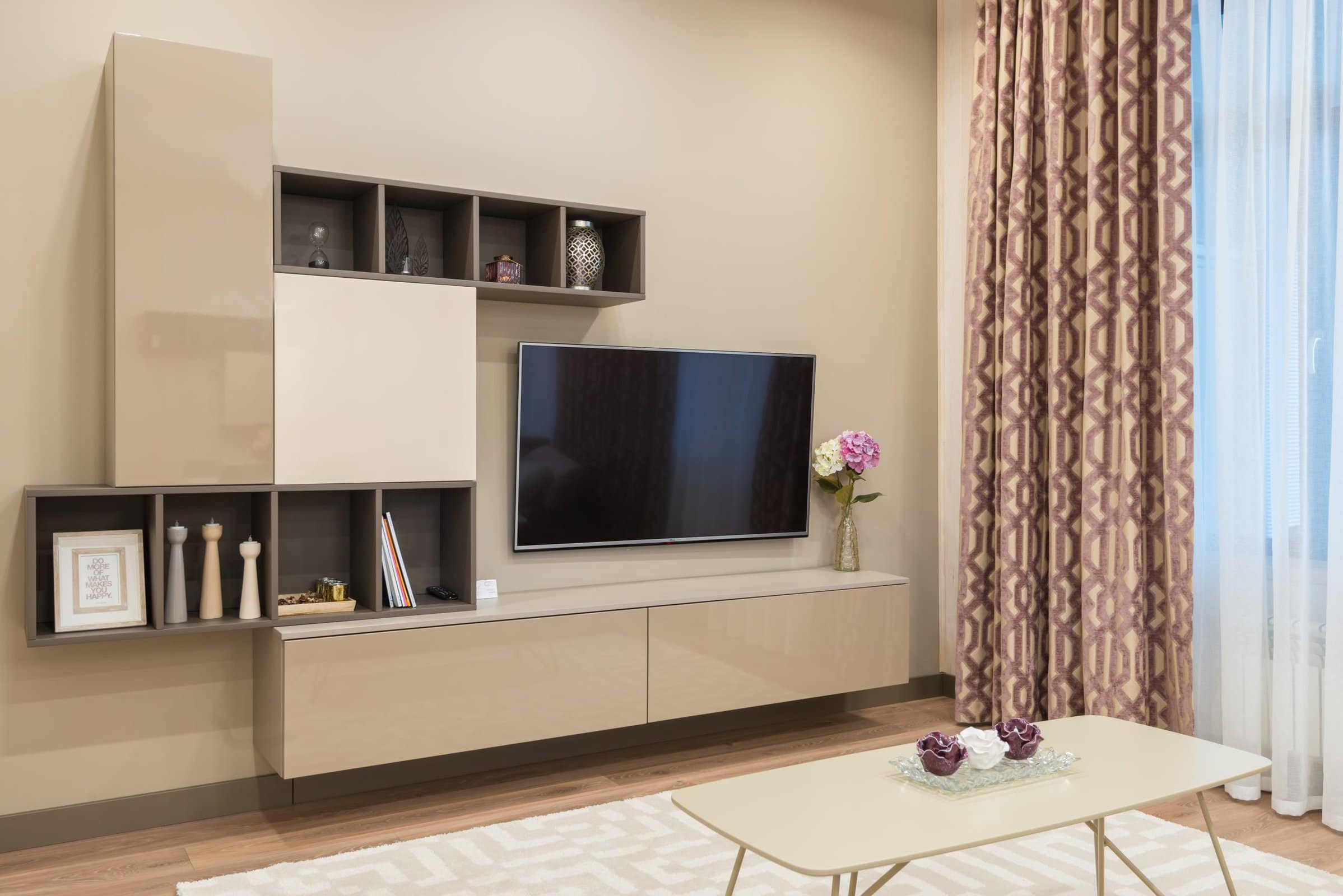
It’s generally not a good idea to have a TV that’s longer or wider than the TV stand itself. There are a couple of reasons for this, but the main issue is safety.
A longer TV is very top-heavy, and won’t be as supported when placed on a short TV stand. It can topple over easily, making it a safety hazard. At best you’ll be stuck with a broken TV, and in the worst-case scenario, it can seriously injure someone.
Stylewise a longer TV looks wonky. It’s not visually pleasing at all, and it creates an imbalance that can take your focus off the TV easily, even while watching your favorite show. Going for a wider TV stand looks way more natural.
How Tall Should a TV stand Be?
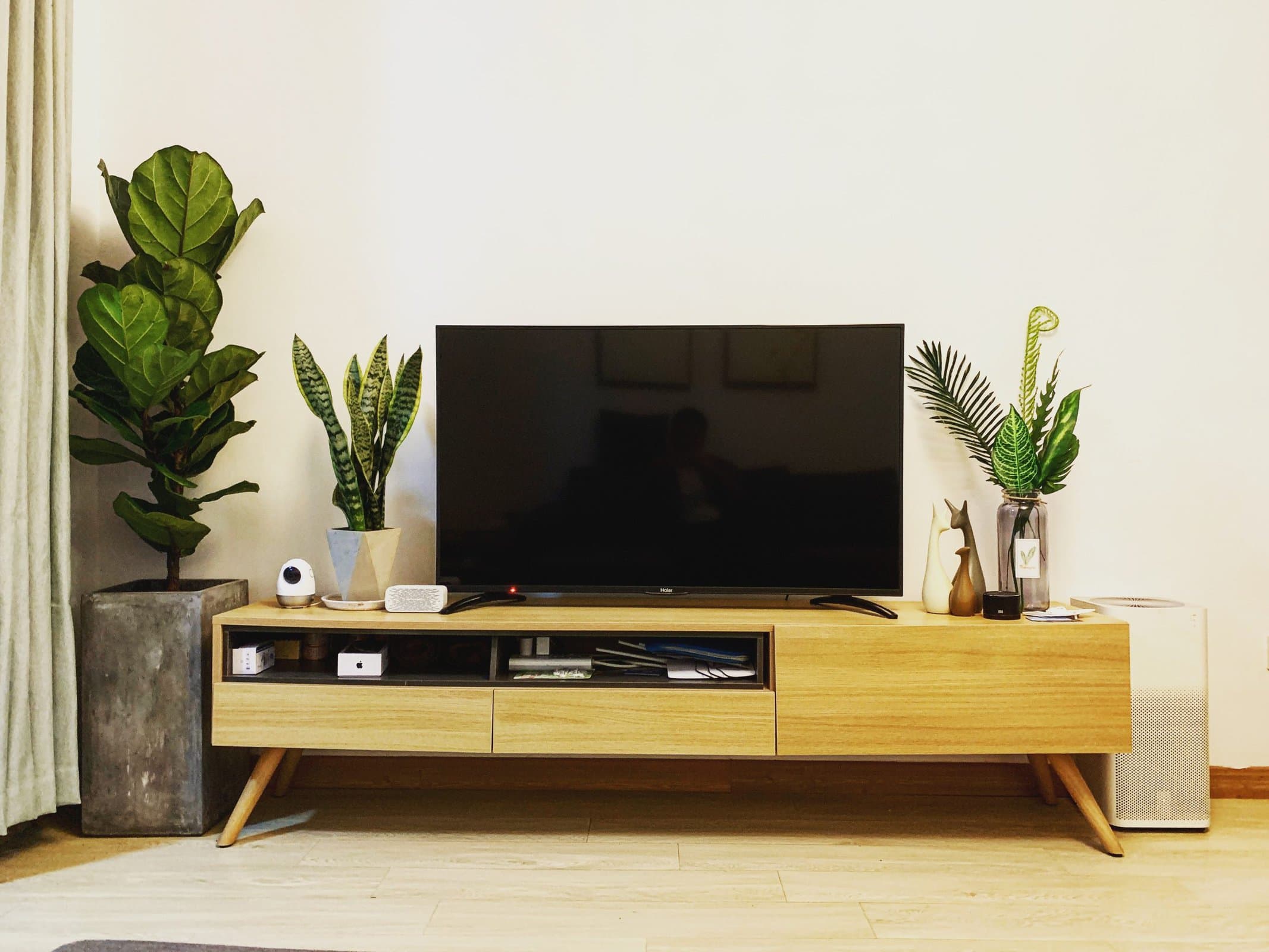
After establishing the proper width of the TV stand, it’s time to find the perfect height. A TV stand needs to be tall enough for you to comfortably watch TV from your sitting area, without straining your neck too much.
This means that a TV stand should be at the eye level of the viewers. And this also means you have to take some more measurements!
Here you have to measure from the sightline of the viewer to the floor, so it’s best to have someone help you with this one. After you’ve got that down, subtract half of your TV measurements from that. And you’ve got the right formula for your TV height, give or take an inch.
Mounting a TV
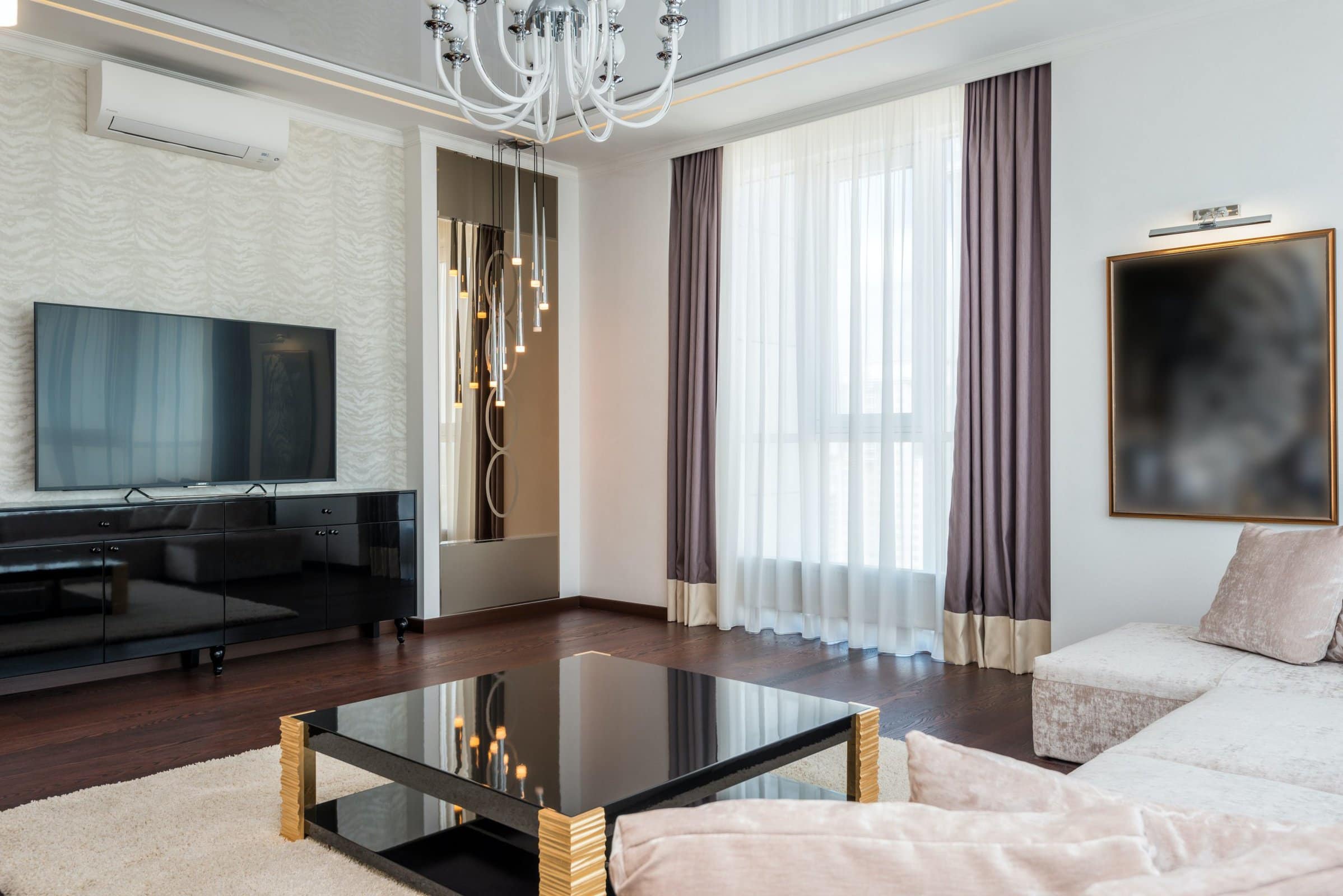
Mounting a TV is another option that’s been quite popular over the years, albeit more expensive than TV stands. There are different types of mounts, so they can practically fit in many different homes. It’s one of the safest options out there, because the TV is latched onto the mount, and can’t be easily knocked off the stand.
Going for a mount will allow you to choose your viewing angle because mounts can be tilted and moved around so you can watch TV from any angle you’d like. This is great if you’re the type to watch TV while doing chores.
It’s also the best option storage-wise, as you don’t need to rely on a stand. But, cable management can be a big issue here. A lot of people aren’t sure what to do with all the cables, so all the loose wiring can affect the overall look of the room.
Decorating a TV stand
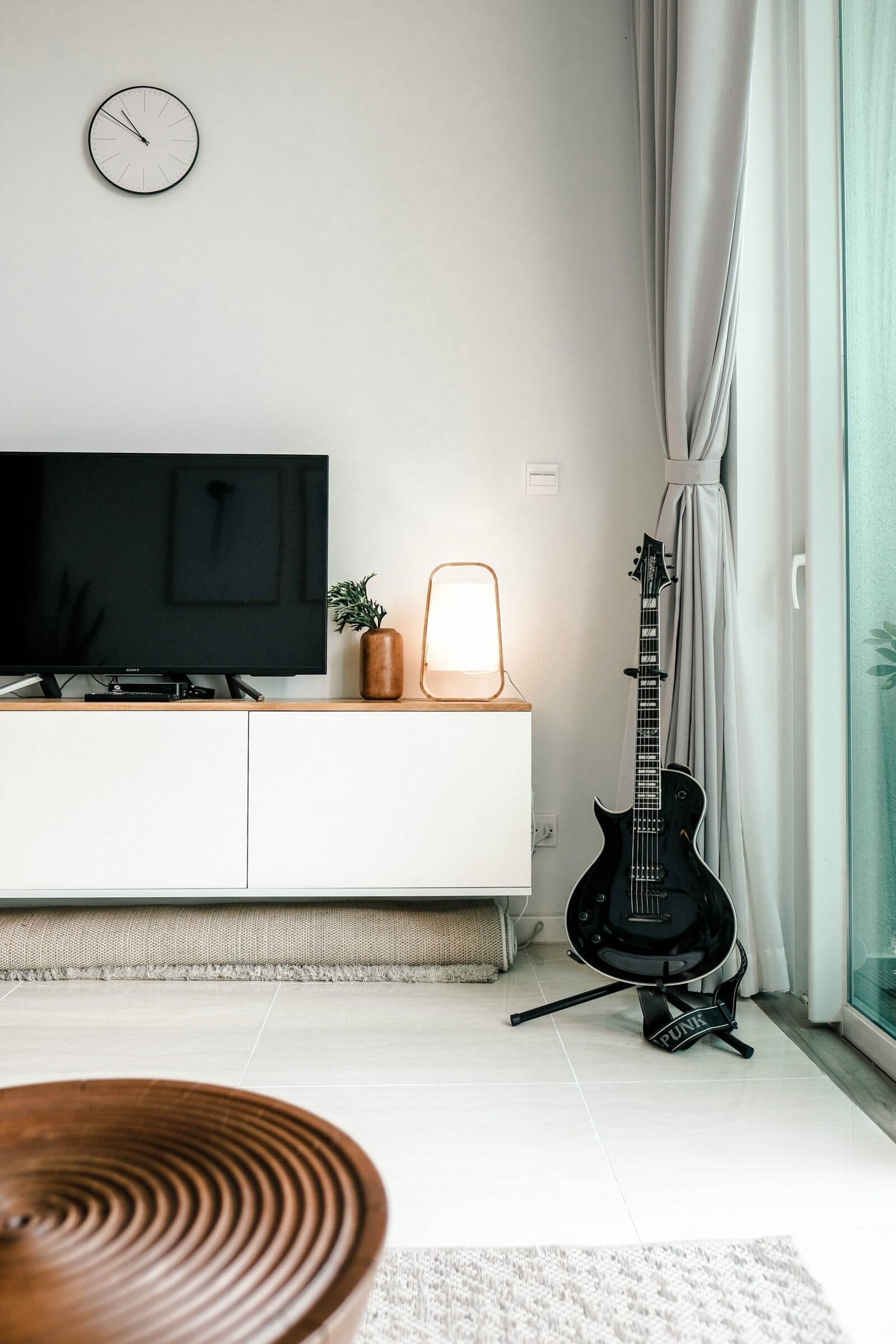
You don’t need to go all in when decorating a TV stand. Since the TV is your focal point, you don’t want anything to take away the spotlight, so it’s necessary to keep it simple.
Sticking to a maximum of 3 objects is the best, as you’ll ensure not to overcrowd your TV stand. But what could those objects be? You can go for candles, plants, or books, simple yet timeless decor pieces that won’t take away much from the TV but will still look lovely.
Don’t forget to color coordinate! The easiest way to create a harmonious look is to coordinate the colors, so don’t be afraid to choose a color scheme and stick to it, even with the simplest of things.
In Conclusion
It’s crucial to pay attention to the width of your TV stand. It should be at least 3 to 6 inches longer than the TV, so you can avoid any kind of safety hazard.
It’s also important to make sure it’s not too high up, or down low so you don’t crane your neck as much. After all, if you spend time relaxing by the TV it should be in the most comfortable position possible!
